
As the Asia Pacific (APAC) region continues to drive global economic growth, the competition for top senior executive talent is heating up.
The challenge is compounded by a scarcity of highly skilled senior executives with the right amalgamation of technical expertise, leadership acumen, and cultural fit.
In this hyper-competitive environment, businesses that want to attract and retain top senior Asian talent must stay ahead of the curve. They must understand the key trends shaping the talent market, adopt best practices from both global and local players, and create compelling value propositions that resonate with the needs and aspirations of Asian executives.
7 Talent Acquisition Trends in APAC for 2024
1. The Growing Impact of AI on Talent Acquisition
Artificial intelligence (AI) is transforming the way businesses approach talent acquisition and management. Back in 2019, pre-COVID and pre-ChatGPT, only about 14% of APAC businesses used AI in their human resources processes, but by 2022, that had increased to 30%, and in 2024, an even larger section has turned to this rapidly evolving technology to manage, source, and assess talent.
One example of AI in action is the use of chatbots for initial candidate screening. DBS Bank, a leading financial services group in Asia, implemented an AI-powered chatbot called Jobs Intelligence Maestro (JIM) back in 2018 to handle initial interactions with job applicants. JIM can answer common questions and assess candidate suitability, freeing up human recruiters to focus on more complex tasks.
And, while many are skeptical about the candidate experience provided by AI, DBS reported that 90% of applicants provided positive feedback.
However, the increasing use of AI in talent acquisition also raises concerns about potential bias and the need for transparency. A study by the National University of Singapore Business School, International Institute for Management Development, and The Hong Kong Polytechnic University found that job applicants believed AI recruitment was less trustworthy and less fair than human-assisted methods.
In order to be successful when it comes to incorporating AI into recruitment processes, APAC businesses must ensure that their AI tools are fair, transparent, and compliant with relevant regulations.
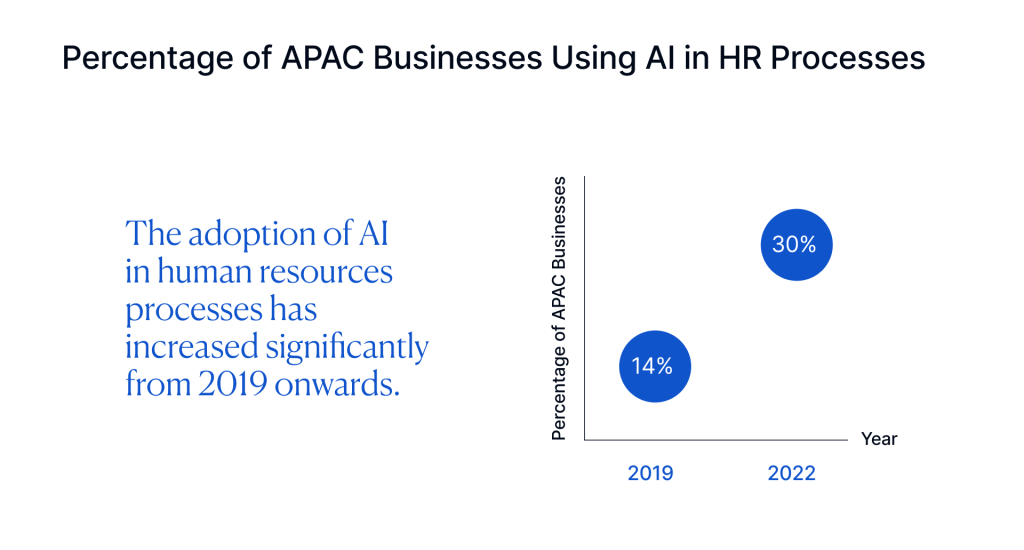
2. The Rise of Remote Work and Virtual Hiring
The COVID-19 pandemic accelerated the trend towards remote work and virtual hiring, and this is expected to continue in 2024 and beyond.
A 2022 survey by Telstra found that more than eight out of 10 APAC businesses accommodate hybrid work arrangements, and Fujitsu predicted that by this year, 30% of all APAC employees would be working remotely.
Remote work offers several benefits for businesses and employees, including increased flexibility, reduced costs, and access to a wider pool of talent. But it also presents challenges in terms of team cohesion, communication, and culture. Businesses must invest in the right technology, processes, and training to ensure that remote teams can work effectively and maintain a strong sense of connection.
A number of large APAC companies have already successfully made the switch to hybrid or remote work arrangements, like Hitachi and Tata Steel.

3. The Importance of Employer Branding
Employer branding has become increasingly important for attracting and retaining top talent, and this is especially the case in the APAC region.
A strong employer brand can help businesses stand out from their competitors, communicate their values and culture, and build a pipeline of engaged candidates.
According to studies by LinkedIn, companies with a strong employer brand receive 50% more qualified applicants and have a 28% lower turnover rate than those with a weak employer brand.
Without a doubt, the most attractive employer brands in the APAC region are those that prioritize employee wellbeing, offer opportunities for growth and development, and have a clear sense of purpose and social impact.
One company that has successfully built a strong employer brand in APAC is Unilever. The consumer goods giant has consistently been ranked as one of the most attractive employers in the region, thanks to its commitment to sustainability, diversity and inclusion, and employee development. In 2022, Unilever Bangladesh won the Asia’s Best Employer Brands award, and Unilever Sri Lanka was also in the top 50 for this award. In 2021, Unilever Singapore also came third in LinkedIn’s Top Companies list and was nominated the top company in the 100 Leading Graduate Employers rankings.

4. The Need to Improve Employee Experience and Wellbeing
Employee experience and wellbeing have become key factors in attracting and retaining top talent. APAC businesses are increasingly investing in initiatives that promote physical, mental, and emotional well-being, such as health and wellness programs and employee assistance programs (EAPs).
A study found that companies with highly effective wellness programs experienced much lower voluntary employee turnover compared to organizations with less effective programs. The study reported a voluntary attrition rate of 9% for companies with highly effective wellness programs, in contrast to a 15% voluntary attrition rate for those with low program effectiveness.
Aon’s 2022-2023 Global Wellbeing Survey found that 40% of APAC organizations named employee wellbeing as their top priority and that 85% of APAC employers already have employee wellbeing programs in place.

5. The Rise of Skills-Based Hiring and Internal Mobility
As the skills landscape evolves and talent shortages grow more dire, APAC businesses are shifting towards skills-based hiring and internal mobility to build agile and future-ready workforces. Companies are focusing less on traditional qualifications and more on the specific skills and competencies required for success in a role.
In 2023, LinkedIn’s Future of Recruiting report found that skills-first hiring was a priority for the largest portion of the surveyed companies, with 80% of Southeast Asian recruiting professionals citing it as their number one priority, as well as 75% of Indian recruiting professionals and 83% of Australian and New Zealand recruiting professionals.
The same survey also found that internal recruitment and, thus, internal mobility are also on the uptick in Asia. Ninety-six percent of Southeast Asian recruiting professionals said that internal recruitment would be a major strategy for them between 2023 and 2028, and 84% of Indian recruiting professionals and 83% of Australian and New Zealand recruiting professionals agreed.
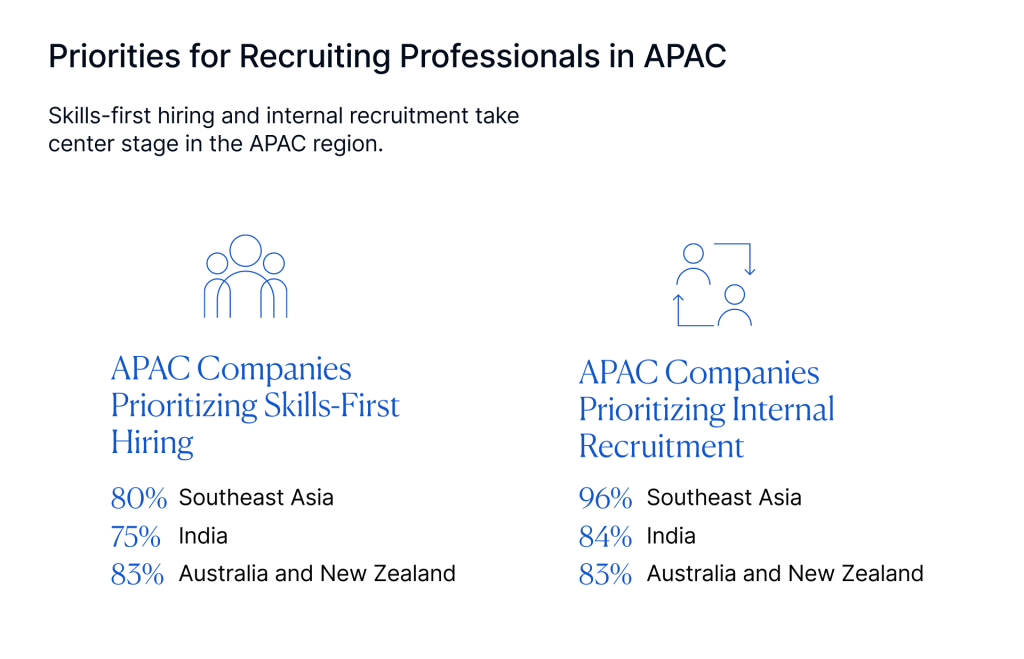
6. The Emergence of Talent Analytics and Data-Driven Decision Making
Talent analytics and data-driven decision making are becoming more important in the APAC talent landscape. Companies are using advanced analytics tools and platforms to gain insights into workforce trends, skills gaps, and performance drivers. This enables them to make more informed talent decisions.
However, while this trend is gaining traction, many businesses in the region are still lagging behind. A 2017 survey found that 71% of APAC companies placed a high priority on people analytics, but a study conducted just two years later revealed that the actual implementation of people analytics processes was surprisingly slow.
This presents an opportunity for APAC businesses: by leveraging data and people insights, they can optimize their talent strategies and stay ahead of the competition in attracting and retaining top talent.

7. The Need for an Increased Focus on Diversity, Equity, Inclusion, and Belonging
Diversity, equity, inclusion, and belonging (DEIB) is one trend that is impacting companies’ talent management and recruitment processes across the board.
A 2019 study by McKinsey & Company found that companies in the top quartile for gender diversity on executive teams were 25% more likely to have above-average profitability than those in the fourth quartile. The study also found that companies with more than 30% women on their executive teams were more likely to outperform those with fewer or no women.
Similarly, a 2018 study by Boston Consulting Group found that companies with above-average diversity in their leadership teams reported 19% higher revenues from innovation than those with below-average diversity. The study also found that diversity in terms of gender, age, nationality, and industry background all contributed to improved innovation performance.
Despite the clear business case for diversity, many companies in APAC still struggle to increase representation of underrepresented groups in their senior leadership teams. Women, in particular, remain underrepresented at the executive and board levels across the region.
According to a 2023 report by Sustainable Stock Exchanges, women hold only 16% of board seats, 7% of Chair sets, and 5% of CEO positions in APAC’s publicly traded companies. To make matters worse, of this same subsection, 21% of organizations had all-male boards that did not feature a single female board member and only 15% of organizations could say that 30% or more of their board was made up of women.
Other underrepresented groups, such as ethnic minorities, LGBTQ+ individuals, and people with disabilities, face similar barriers to advancement in many APAC countries.
But companies that fully and completely commit themselves to DEIB can reap the inherent rewards. DBS Bank, for example, managed to do just that. It currently boasts a senior management team that is 40% female, a total workforce that is 60% female, and a third of its Group Management Committee is female, too.
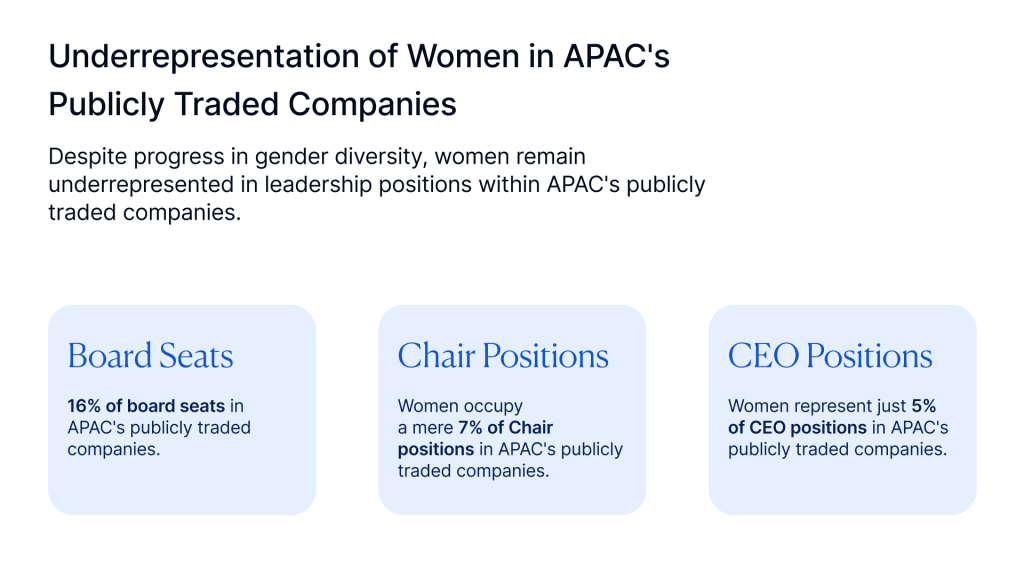
4 Steps APAC Businesses Should Take to Attract Top Senior Asian Executives
For businesses operating in the APAC region, attracting and retaining top senior Asian talent requires an approach that is aligned with the expectations of executives in this market.
While the overall strategies around employer branding and talent management best practices are important, there are some key things APAC businesses need to focus on:
1. Provide Competitive Compensation and Benefits Packages Suited to Local Markets
While compensation and benefits remain the primary consideration for Asian executives when evaluating job opportunities, non-monetary factors are increasingly important. According to a 2022 report by Mercer, 34% of APAC employees prioritize flexible work arrangements over a pay raise. The same study revealed that 32% would forgo a salary increase in favor of additional wellbeing benefits, and 30% would do so for the ability to work remotely.
APAC businesses need to benchmark their packages against local market rates and offer compelling incentives like remote or flexible work arrangements, additional wellbeing benefits, housing allowances, education benefits, and transportation stipends that are highly valued in many Asian countries.
For example, Tencent has taken a pretty big step to attract and retain talent by expanding its employee housing assistance program. The company now offers interest-free loans of up to 900,000 yuan (currently approximately $124,000 USD) to help employees purchase their first home. This incentive is expected to pay dividends in terms of employee satisfaction, loyalty, and long-term commitment to the company.
Understanding and catering to the specific compensation expectations and lifestyle needs of Asian executives is critical.
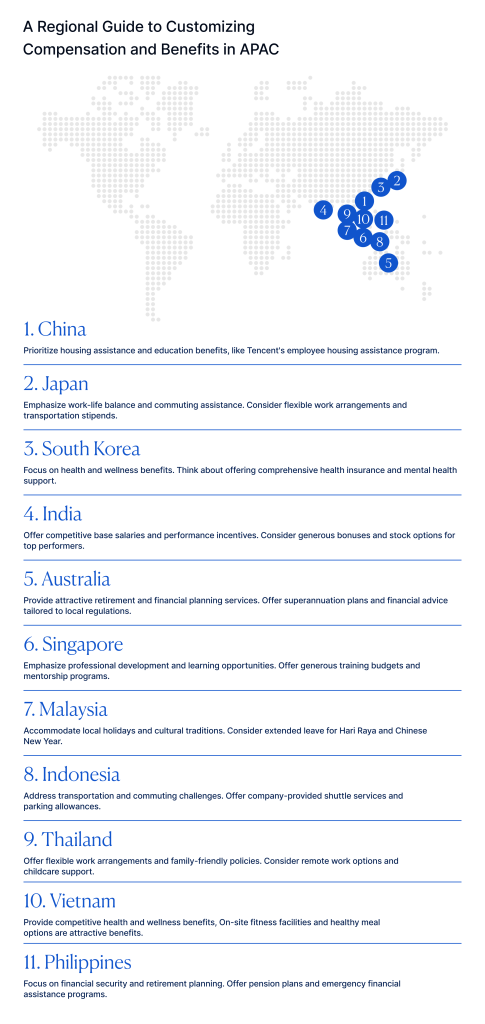
2. Create an Entrepreneurial Culture and Intrapreneurial Opportunities
Many Asian professionals are drawn to work cultures that allow them to innovate, experiment, and pursue new ideas. APAC businesses should look to create a culture and programs to encourage this entrepreneurial drive.
DBS, for example, has launched internal incubators and “hackathons” to have employees develop new products and solutions. This allows aspiring entrepreneurs to scratch that itch while staying in a large corporate environment.
APAC businesses that can blend startup energy with corporate resources and stability have an advantage in attracting ambitious Asian talent.
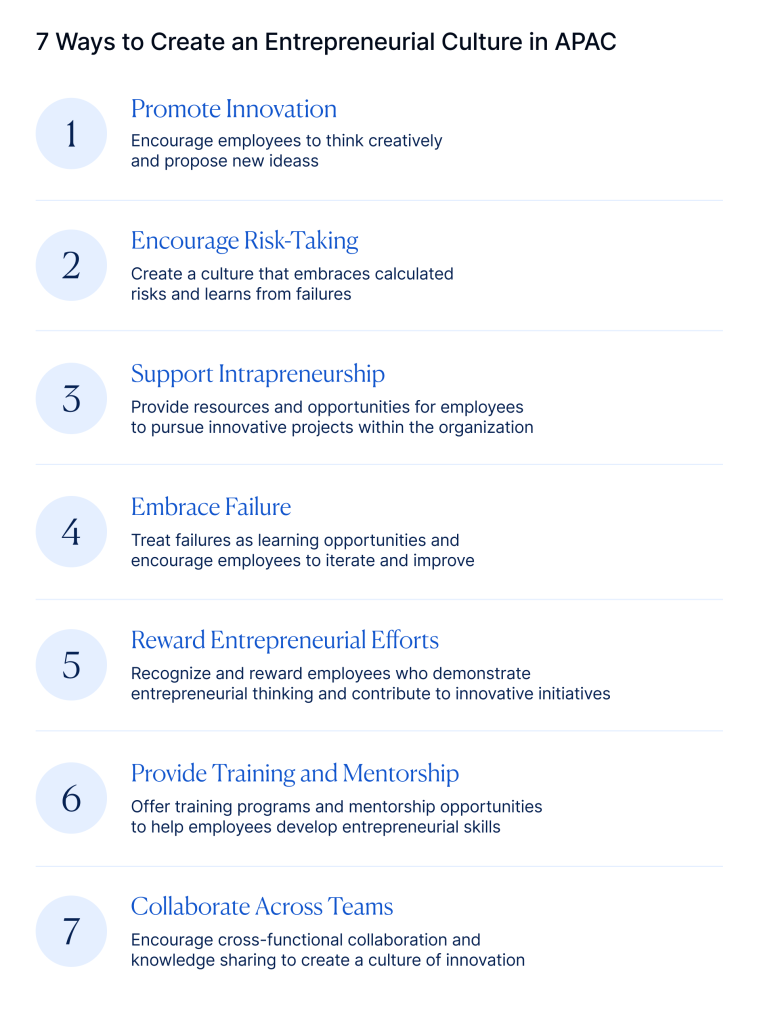
3. Invest in Cutting-Edge Technology and Digital Transformation
Asian executives are increasingly drawn to companies at the forefront of technological innovation. In fact, 60% of market leading organizations in the APAC region have already placed digital innovation at the center of their growth strategies with structured and systemic digital innovation programs.
Samsung, for example, has been actively investing in emerging technologies such as artificial intelligence, 5G, and the Internet of Things (IoT). The company has established a global network of research centers and has partnered with leading universities and startups to drive innovation. This commitment to cutting-edge technology has helped Samsung attract top engineering and management talent from across the APAC region.

4. Create a Culture of Continuous Learning and Upskilling
With the rapid pace of technological change and the increasing demand for new skills, Asian executives place a high value on opportunities for continuous learning and professional development.
According to a 2023 survey by PWC, a not-insignificant portion of the APAC workforce anticipates major changes in the skills required for their roles within the next five years. The survey revealed that 44% of employees in the region believe their job skills will undergo substantial transformations. However, only 48% of respondents expressed a clear understanding of how their skills will need to adapt to these changes. This discrepancy suggests that businesses in the APAC region are generally not providing sufficient support to their employees in terms of ongoing learning and training opportunities.
But there are a few APAC organizations that are already getting it right. DBS Bank has invested heavily in employee learning and development. It established the DBS Academy, a state-of-the-art learning facility that offers a wide range of training programs, from digital skills to leadership development. This focus on continuous learning has helped DBS attract and retain top talent in the highly competitive banking industry.

Where APAC Businesses Can Turn for Help in Finding Top Senior Asian Executive Talent
Attracting and retaining top senior Asian executives in 2024 is no easy feat. It requires an understanding of the APAC talent landscape, a compelling employer brand, and a proactive and targeted approach to talent acquisition and management.
Attracting and retaining top senior Asian executives requires an understanding of the APAC talent landscape, a compelling employer brand, and a proactive and targeted approach to talent acquisition and management.
For many businesses, partnering with a specialized executive search firm can be a game-changer. One such firm is Stanton Chase. With offices in key markets such as Korea, China, India, Japan, Singapore, Malaysia, and Australia, we have a deep understanding of the nuances and dynamics of the APAC talent market.
Our experienced consultants work closely with clients to understand their business needs, cultural fit, and leadership requirements. We use our extensive networks and innovative assessment tools to identify and attract top senior Asian executives who can drive business growth and success.
Whether you are a multinational corporation looking to expand your presence in APAC or a local Asian company seeking to build a world-class leadership team, we can be your trusted partner in managing the complexities of the senior executive talent market. Click here to reach out to one of our consultants.
About the Authors
Frank Koh is a Partner at Stanton Chase Singapore and the APAC Industrial Regional Sector Leader. He brings over two decades of professional experience in providing comprehensive people solutions across China and the APAC region. With expertise in retained executive search and executive and career coaching, Frank has established trusted partnerships with clients in high-tech industries such as manufacturing, information technology, chemical, and life sciences. He holds an MBA from Preston University, a Graduate Diploma in HRM from the Singapore Institute of Human Resources, an Advanced Manufacturing Certificate 4.0 in Automation, and a Professional Certificate in Supply Chain Innovation. Frank is also a certified assessor of DISC profiling.
Tony Kang is a Managing Director at Stanton Chase Korea. He has over 23 years of experience working for leading multinational pharmaceutical, medical device, and optical companies in Korea and the United States. With an extensive background in leadership and business, particularly in the healthcare industry, Tony has served in senior positions at Eli Lilly, Allergan Korea, Biopol Korea, and Carl Zeiss Vision Korea. As the leader of Stanton Chase Korea for the past 12 years, he has ventured into management consulting, specializing in executive search, assessment, and leadership advisory across the Industrial, Consumer Products and Services, and Healthcare sectors. Tony is a certified assessor for Hogan Assessments, Hofstede Insights Organizational Cultural Assessments, and Gallup Strengths Coaching. He holds an MBA from the Helsinki School of Economics and Business and a Bachelor’s degree from the Veterinary Medical School of Jeonbuk National University.
How Can We Help?
At Stanton Chase, we're more than just an executive search and leadership consulting firm. We're your partner in leadership.
Our approach is different. We believe in customized and personal executive search, executive assessment, board services, succession planning, and leadership onboarding support.
We believe in your potential to achieve greatness and we'll do everything we can to help you get there.
View All Services
